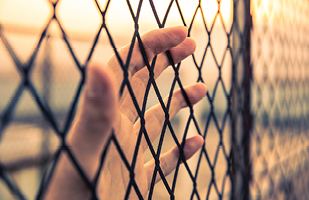Law Students Provide Hope to Human Trafficking Survivors

Law students at Case Western Reserve University have been helping human trafficking survivors with legal and personal troubles since 2014. (istock/xijian)

Law students at Case Western Reserve University have been helping human trafficking survivors with legal and personal troubles since 2014. (istock/xijian)
The issues that accompany human trafficking victims are complex to even the most seasoned legal professional. However, that’s not stopping some Ohio law students from trying to help.
Since 2014, Case Western Reserve University School of Law has operated a Human Trafficking Project, which represents individuals who are victims of sex and labor exploitation.
“We’re standing with people who need people to stand with them,” said Maya Simek, the program’s director.
As a licensed attorney and social worker, Simek oversees law students and graduate-level social work students who assist with civil legal matters, witness advocacy, and trauma-informed social service referrals around such issues as counseling, employment, and housing.
The law students act as legal interns certified by the Ohio Supreme Court, who work on behalf of the Milton A. Kramer Law Clinic, a law firm within the law school operated by full-time faculty.
“The experience is invaluable,” said law student Zora Raglow-DeFranco. “Until this, I had very little opportunity to work with people in the real world.”
The exposure to those suffering from immense physical, mental, and emotional trauma, and the criminal justice system that entangles survivors, has been eye-opening. Whether that’s navigating through the labyrinths of bureaucracy to acquire services and resources to assist with a victim’s day-to-day struggles, or gaining a client’s trust after years of abuse by strangers.
“You have to have patience, letting them know you are there for them and there to support them,” said Evette Thompson, another law student.
As part of the clinic, these prospective attorneys operate as a cog within a network that includes local courts, law enforcement, and other community partners. That connection allows the legal interns to participate in larger efforts to locate, identify, and support human trafficking survivors.
In October, a joint federal, state, and local law enforcement sting known as “Operation Autumn Hope” rescued 154 survivors of human trafficking, including 45 missing children. The effort led to 179 arrests.
Some of those cases were referred to the Human Trafficking Clinic.
“The operation was massive and (seemed) quite intimidating going in, but it was nice to see how all that (coordination) came together” to save so many lives, Thompson said.
The clinic also practices proactive measures by providing education to community stakeholders and the general public about human trafficking issues, including misconceptions about what a survivor looks like, their background, and resiliency.
“We need to stop putting them in a victim mentality,” Raglow-DeFranco said.
Other program community outreach includes trying to identify victims who may be overlooked in jails, rehabilitation facilities, and among other organizations that are trying to help.
That added filter to find those in need, and get them connected to those who can help in their recovery, is part of a growing chain of assistance within the project and the legal system.
“It’s a humble recognition that you are just a piece of that person’s much-larger experience,” Simek said. “It’s great to do something that you can believe in.”


